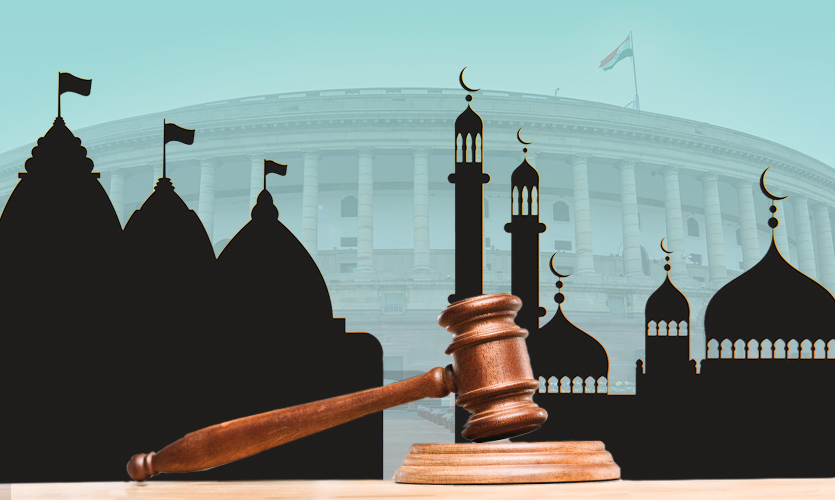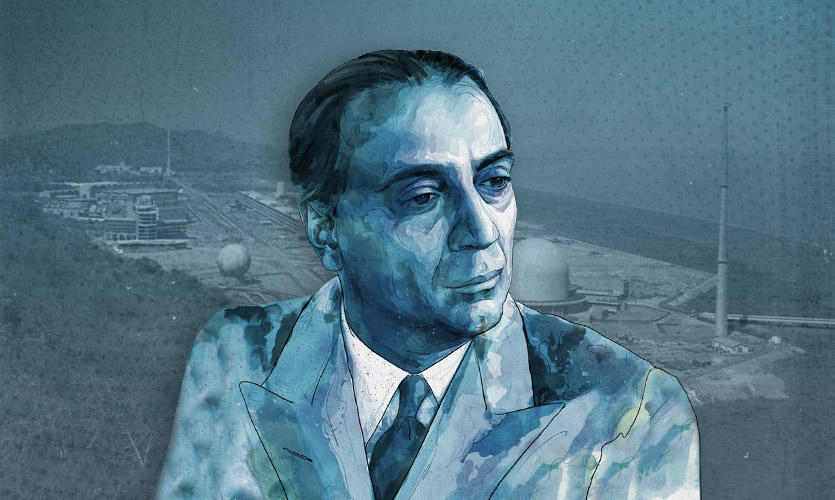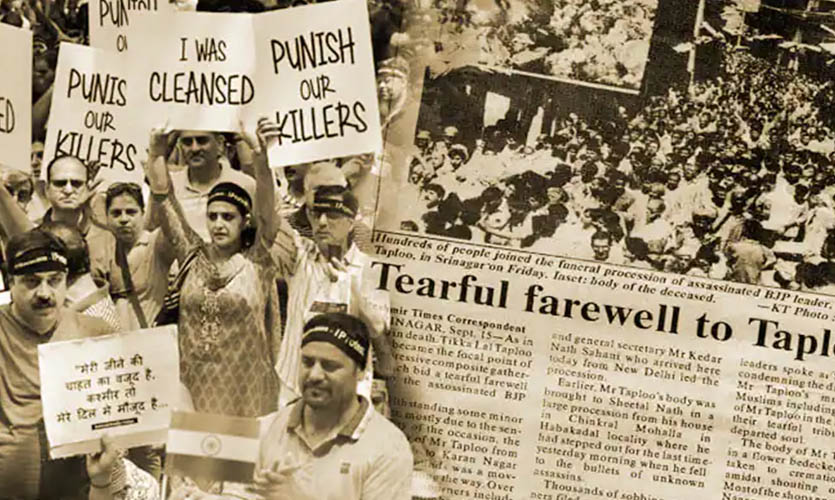As stated in the Constitution of India, the Hindu Religious and Charitable Endowments Act gives the government administrative and management powers over Hindu temples, including their coffers.
In the case of Gyanvapi, the Places of Worship Act, 1991, has been a hindrance in allowing the court to award Hindus the permission to worship at the suspected ‘shivling’ inside the mosque.
Is it time the Centre takes responsibility and a clear stand on legislations related to places of worship?
The Kashi Vishwanath-Gyanvapi Conundrum
In the latest developments, in the Kashi Vishwanath temple and Gyanvapi mosque case, a Varanasi court has fined the Anjuman Intezamia Masjid Committee for not filing an objection to the survey of two basements in the complex, and the matter is scheduled to be heard on November 2. “The mosque side could not file any objection, after which the court slapped a fine of Rs 100 on it and fixed November 2 for the hearing,” said district government counsel Mahendra Pandey, on October 21. Meanwhile, on October 18, the Allahabad High Court granted 10 days’ time to the Archaeological Survey of India (ASI), as a last opportunity to file a counter-affidavit to the masjid committee’s petition challenging worship of supposed Hindu deities within the complex. The ASI director-general has been directed to file his personal affidavit since the agency’s earlier counter-affidavit was “very sketchy”, as described by Justice Prakash Padia. While the district court had already observed that the Places of Worship Act does not apply in this case as the devotees are seeking permission for daily worship of the idols they claim are already installed there, the masjid committee continues to cite the Act to prove non-maintainability of petitions filed by the Hindu worshippers.
Section 3 of the Places of Worship (Special Provisions) Act, 1991, states:
“No person shall convert any place of worship of any religious denomination or any section thereof into a place of worship of a different section of the same religious denomination or of a different religious denomination or any section thereof.”
The Act was passed in the Parliament while the PV Narasimha Rao Congress government was in power, during the Ram Janmabhoomi movement led by LK Advani and the Vishva Hindu Parishad with its allied groups. The legislation did not apply to the Babri Masjid land at the time as its religious character was already disputed. The issues of Kashi Vishwanath temple-Gyanvapi mosque in Varanasi and Krishna Janmabhoomi-Shahi Eidgah mosque in Mathura were also raised by the Hindu right-wing groups along with Ayodhya, in the 80s-90s. “It is considered necessary to adopt these measures in view of the controversies arising from time to time with regard to conversion of places of worship which tend to vitiate the communal atmosphere… Adoption of this Bill will effectively prevent any new controversies from arising in respect of conversion of any place of worship…,” Home Minister SB Chavan had said in the Parliament, while moving the Bill. While it is possible that this may have been to discourage lawlessness and award the judicial overlords enough time to take a call over the Ayodhya matter, the move seems to have been construed (perhaps not wrongly) as minority appeasement, escalating the vandalisation of Babri Masjid later that year, in December 1991.
While the Ram and Krishna Janmabhoomi matters pertain to the area of land believed to be of significant historical importance to the Hindu community, with regard to the respective gods’ birth places, the case of Kashi Vishwanath is currently limited to the devotees’ right to worship the supposed shivling and Maa Shringar Gauri’s idol at the erstwhile temple site, i.e., to continue the rituals allegedly in practice until 1993. “The right of land of Gyanvapi does not come under the purview of Rakhi Singh (one of the petitioners) or any of the plaintiffs. The owner of the land is Lord Adi Vishweshwar. No devotee can lay claim to the land of God,” said Advocate Shivam Gaur, representing Singh. Nevertheless, if the Places of Worship Act were to be applied, given that it makes the conversion of “any section” of a religious place illegal, allowing Hindu deities to worship the idols, if any were to be found permitting further investigation, would be in keeping with the law. But there is hesitation still.
On October 14, Varanasi District Court Judge Ajay Krishna Vishwesh’s bench rejected the appeal for carbon-dating of the supposed shivling at the Gyanvapi mosque, citing fears that the process might damage the structure. “There is also no possibility of any judicial solution to the questions integral to the case by issuing any order. Hence, this application is liable to be dismissed,” said the court. In doing so, the court seems to have absolved itself of the responsibility of investigating a matter of grave judicial importance, leaving the higher courts to deal with the same. Noteworthy, the demolition of the Kashi-Vishwanath temple has been recorded in Mughal dictator Aurangzeb’s biography, as ordered by him in 1669. Moreover, carbon-dating is a process used to determine the age of living organisms, and was also not part of the request made by the Hindu plaintiffs.
The Uneven Communal Scale
Given the violent history dating before the British Raj, the conversion and perversion of the places of worship, religion and culture in India is a familiar and recorded truth. Former Congress leader Ghulam Nabi Azad has repeatedly pointed out how all Kashmiris who identify as Muslims today, including his own family, used to be Kashmiri Pandits. Yet, 75 years after attaining independence, the liberal lobby still seems adamant to protect the mosques that are the most aesthetic reminders of the wrath of invaders faced by Hindustan. For the judiciary, upholding the religious character of a place of worship is its duty in accordance with upholding the Indian constitution. But for the liberal Opposition, it seems to be blatant minority appeasement, with the Act playing the role of a pelted stone, proving heavier on the scale of justice.
Journalists like Rana Ayyub insist that the world is ignoring the so-called radicalisation of India, misleading the world from the radicalisation that India has been put through throughout history, and continuing now with the demonisation of the Hindu sanatan dharma that continues to be a way of life as preached and not a religion. Ayyub and her peers at the Washington Post seem to disregard the imposition of the hijab on younger girls as the choice to follow Islamic customs, while terming the worship of Hindu gods as right-wing religious fanaticism. “Not all Muslims” seems to be an appropriate justification when it comes to conversion and the latest beheading related crimes. It is worth wondering whether a “not all Hindus” justification would work when it comes to instances of brutality imposed by extreme right-wing groups in the name of Hinduism. Yati Narsinghanand would attest that it doesn’t.
The Western media and so-called humanitarian organisations have repeatedly tried to take India to task over minority rights, with no regard for the rest of the population. They continue to be biassed against the interests of India, and blatantly disregard its secular fabric while claiming to uphold it. Secularism, by definition, means the separation of state from religion and religious institutions. How, then, does the protection of Islam take precedence over the rest of the minorities as well as the majority Hindu community? The Citizenship (Amendment) Act (CAA) and the National Register of Citizens (NRC) were ruled out as discriminatory against Muslims, without considering the minority rights violations in the countries surrounding India. If India were to allow the Buddhist, Christain, Hindu, Jain, Parsi, and Sikh minority community citizens of Afghanistan, Bangladesh, and Pakistan to seek refuge in India, what good would it achieve to allow the same for the community they were saving themselves from? Is it secular to protect only one religion? The fake news about the Muslims of India suffering if these laws were implemented was debunked by many Islamic scholars and religious leaders themselves. But not the Ayyubs and Zubairs, who preach secularism but evidently prefer selective theocracy.
The Waqf Act, 1995, also brought by the Narsimha Rao government, is a glaring example of the uneven communal scale held by the blind goddess of justice. Under section 40 of the Act, the Waqf Board “may itself collect information regarding any property which it has reason to believe to be wakf property and if any question arises whether a particular property is wakf property or not or whether a wakf is a Sunni wakf or a Shia wakf it may, after making such inquiry as it may deem fit, decide the question”. This indicates that the Waqf Board can claim a property as its own and of Islamic religious importance, without any other adjudicating authority since the Board will determine the result of any investigation.
As per estimates, 77 percent of the NCT of Delhi is on Waqf land. The Waqf Board is believed to be the second-largest landowner in the country, after only the Indian Railways. The Waqf Board, as Swarajya consulting editor Dr Anand Ranganathan points out, can adjudge any donated property as belonging to Allah, if it believes the same to be pious, religious or charitable. The issue was only recently highlighted when the Tamil Nadu Waqf Board claimed ownership of the entire Thiruchendurai village, including that of the 1500-year-old Sundareswarar Temple in the area. The ownership was explained in a 250-page letter by the Waqf Board, which represents the ideals of a religion which is only 1300 years old.
Onus On Centre
The Gyanvapi mosque management counsel Huzefa A Ahmadi had claimed:
“The basis of the suit is that the mosque was earlier a temple. In the Ayodhya judgement, the SC had ruled that that argument could not be the basis for filing a suit to change the character of a mosque. Namaz has been offered at this mosque since time immemorial. The apex court should itself examine the maintainability of the suit.”
As explained before, the judiciary is simply upholding the constitution it is sworn to protect, which makes it the duty of the Centre to issue clarification. This is a legislation issue, as also pointed out by the courts. The Places of Worship Act, while perhaps attempting to indiscriminately protect the religious character of all places of worship, takes away the right to correct historical wrongs against one specific culture. Monuments are protected as they are reminders of the civilisation and history that came before. Is it more barbaric to eradicate an entire culture, or to refuse its restoration and preservation even after uncovering the truths documented by the very barbarians who destroyed it?
As explained by Supreme Court Advocate Vishnu Jain in his interview with Times Now Navbharat, under sections 52 and 53 of the Waqf Act, the Waqf Board can order the District Magistrate and the SP/SSP working with them to comply and assist in vacating a land if it believes it to be encroached and claim it as Waqf property. The Waqf Board can declare anyone an encroacher under section 54. Under section 89, a notice should be issued before filing any case against the Waqf. However, under section 108, the Waqf can approach the court against anyone at any time. Under sections 4 and 5, the cost of any survey of property under the Waqf Board will be borne by the central government. One of the arguments made by the mosque committee in the Kashi Vishwanath-Gyanvapi case, as per Advocate Jain, is that the proceedings cannot be carried out in a civil court as it is legally Waqf property, and hence, under the jurisdiction of the Waqf Tribunal which works as per the Sharia law. Waqf judgement can only be overturned by the Supreme Court, if deemed at all necessary.
Dangerous precedents continue to be stacked against equal treatment of all communities in India. In a judgement last month, the SC had rejected the plea for a SIT probe into the mass killings of Kashmiri Pandits since 1989, saying that there is a lack of evidence, while also suggesting the petitioners to approach the Centre. Recently, the central NDA government, led by the Bharatiya Janata Party, took a backseat on the Uniform Civil Code (UCC) in the aftermath of the hijab controversy. “This is a matter of policy for the elected representatives of the people to decide…. It is for the Legislature to enact or not to enact a legislation,” said the Centre in its reply affidavit after the apex court sought a reply to petitions filed by Advocate Ashwini Kumar Upadhyay. The Centre said that “in view of the importance of the subject matter and sensitivity involved, which requires in-depth study of the provisions of various personal laws governing different communities”, it had requested the 21st Law Commission of India to “undertake examination of various issues relating to Uniform Civil Code and to make recommendations thereof.” The 21st Commission’s term ended on August 31, 2018. “Subject matter will be placed before the 22nd Law Commission for its consideration when chairman and members of the Commission are appointed,” said the Centre, following whose observations various stakeholders will be involved in the consultation process. Noteworthy, implementation of the UCC is one of the BJP’s prime manifesto promises that has swayed the last two elections in its favour, and also a recommended legislation of the SC. Unfortunately, it is also a directive principle of the constitution, which holds the government under no obligation to enact it.
There are other laws such as the Right to Free and Compulsory Education Act (RTE), which exempts minority schools from the State’s purview. As per the Hindu Religious and Charitable Endowments Act, the State can intervene and control the administrative and financial affairs of Hindu temples. Essentially, donations received by temples for its maintenance or otherwise are accessible to the State, but not those of mosques. Private, non-minority schools are bound by the RTE which ensures that children upto the age of 14 are entitled to free education, but the madrasas are not. The Preamble was amended to assure that India is and will remain a secular nation. In protecting minority rights, is it acceptable to ignore the rights of the majority? Noteworthy, India is one of the few nations to award temporary spaces of refuge to Rohingya Muslims, which is a laxity not offered by most of the 50 Muslim majority countries in the world, out of which, 26 countries recognise Islam as their official religion. India is the only naturally Hindu country, which has been attempted to be divided by Muslim invaders, Khalistani beggars, and UN hypocrites.
For Hinduism, a culture openly and proudly accepting of all other cultures and religions, history has been violent enough owing also to this very unique trait. Maybe, for once, we can achieve peaceful ideals, or at least lawful decisions, without being doomed to repeat it.
The Horus Eye is a weekly column written by Divya Bhan analysing current affairs and policies. This column does not intend or aim to promote any ideology and does not reflect the official position of The Sparrow.
Also read: Does The PFI Ban Give Grounds For A RSS Embargo In The Name Of Secularism?










